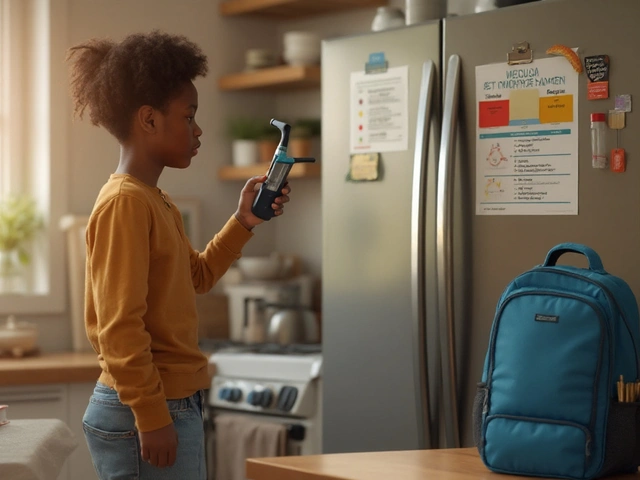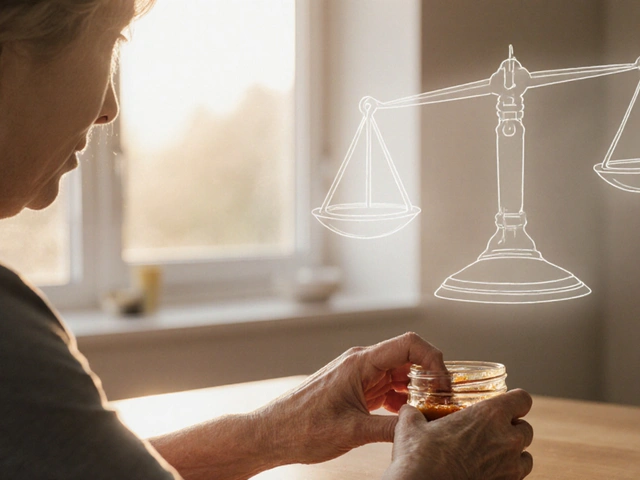Oral Cancer Symptom Checker
This tool helps you determine if your symptoms might indicate a need for professional dental evaluation. Remember, this is not a diagnostic tool. Always consult a healthcare professional for medical advice.
Your Symptoms
Risk Factors
Your symptoms will be evaluated here...
Ever felt a sudden, lingering ache in a tooth and wondered if it’s just a cavity or something far more serious? While most toothaches are harmless, certain patterns can hint at oral cancer symptoms that need urgent attention. Understanding where a simple tooth pain ends and a warning sign begins can save a life.
What Is a Toothache?
When a tooth hurts, the cause usually traces back to decay, infection, or trauma. The pain might be sharp, throbbing, or sensitive to hot and cold. A Toothache is an acute or chronic discomfort originating from dental tissues, often caused by caries, pulp inflammation, or periodontal disease. Most dentists can treat it with fillings, root canals, or extractions, and the relief is usually quick.
When a Toothache Could Signal Something More Serious
Not every ache is about a broken filling. Persistent, unexplained pain that spreads beyond the tooth, especially when accompanied by other oral changes, may be a red flag. If you notice any of the following alongside a toothache, it’s time to think beyond the usual dental culprits:
- A lump or thickening on the tongue, inner cheek, or floor of the mouth that doesn’t go away.
- White or red patches that persist for more than two weeks.
- Unexplained bleeding while chewing or brushing.
- Difficulty swallowing, moving the jaw, or a persistent sore throat.
- Numbness or tingling in the lip or tongue.
These signs can overlap with early stages of oral cancer, a disease that thrives on delayed detection.

Oral Cancer 101: Types and Risk Factors
Oral cancer isn’t a single entity; it includes cancers of the lips, tongue, floor of the mouth, gums, palate, and inner cheek. The most common type is squamous cell carcinoma, accounting for over 90% of cases.
Key Risk Factors are behaviors or exposures that increase the likelihood of developing oral cancer, such as tobacco use, excessive alcohol consumption, HPV infection, and chronic sun exposure to the lips. Age over 50, a history of oral precancerous lesions, and a weakened immune system also raise the odds.
Warning Signs That Overlap With Tooth Pain
Distinguishing a regular toothache from a sign of cancer can be tricky because both can involve discomfort, swelling, and difficulty eating. Below are the most common overlaps and how they differ:
- Pain that radiates - A regular cavity usually hurts in a localized spot. Cancer‑related pain may travel to the ear or jaw.
- Persistent sore - A sore that heals within a week is typical after trauma. One that lingers beyond two weeks deserves a professional look.
- Unusual swelling - Swelling from an abscess is often tender and fluctuates with infection. A firm, immobile lump could indicate a tumor.
How to Distinguish Benign Toothache From Cancer Warning Signs
| Feature | Typical Toothache | Possible Oral Cancer Sign |
|---|---|---|
| Pain Location | Specific tooth or adjacent gum | Diffuse, may affect tongue, cheek, or palate |
| Duration | Improves after treatment or antibiotics | Persists > 2 weeks despite care |
| Appearance | Visible decay or cracked tooth | White/red patch, ulcer, or lump |
| Swelling | Soft, tender, fluctuates with infection | Hard, fixed mass that doesn’t move |
| Bleeding | Occasional, associated with brushing | Spontaneous or after light contact |
When you see any of the “Possible Oral Cancer Sign” traits, treat them as serious until a professional says otherwise.

Steps to Take If You Spot a Warning Sign
- Schedule an appointment with a Dentist a licensed oral health professional equipped to evaluate dental pain, perform examinations, and refer patients for further testing when needed. Mention the exact symptom timeline.
- If the dentist suspects malignancy, you’ll be referred to an Oncologist a medical doctor specialized in diagnosing and treating cancers, including oral cancers or an oral‑maxillofacial surgeon.
- The specialist may order imaging (X‑ray, CT, MRI) and a biopsy. A biopsy-removing a tiny tissue sample-remains the gold standard for confirming cancer.
- Follow the treatment plan promptly. Early‑stage oral cancer often responds well to surgery, radiation, or minimally invasive therapies.
- Maintain regular follow‑up visits. Even after treatment, recurrence can occur, and early detection of a new lesion improves outcomes.
Prevention and Early Detection Tips
While you can’t control every risk factor, many habits lower your chance of developing oral cancer and make any future issues easier to catch.
- Quit tobacco. Smoking and smokeless tobacco increase risk by up to 15 times.
- Limit alcohol. Heavy drinking combined with smoking compounds the danger.
- Practice safe oral sex. HPV‑16 is a leading cause of oropharyngeal cancers; vaccination and condom use reduce exposure.
- Use lip balm with SPF. Sun‑induced lip cancers are common in outdoor workers.
- Maintain rigorous oral hygiene. Brush twice daily, floss, and use an antimicrobial mouthwash to keep the mouth clean.
- Schedule routine dental check‑ups. A dentist can spot suspicious lesions during a standard exam, often before you notice symptoms.
- Perform self‑exams monthly. Stand in front of a mirror, look for discoloration, lumps, or persistent sores, and note any changes.
Early detection hinges on vigilance. The more familiar you are with normal oral anatomy, the quicker you’ll flag anomalies.
Frequently Asked Questions
Can a simple cavity turn into oral cancer?
No. A cavity is a decay of tooth enamel caused by bacteria. Oral cancer originates from the cells lining the mouth and throat. However, a cavity can mask early cancer signs if it’s located near a suspicious lesion, so a thorough exam is essential.
How long should a sore in the mouth be monitored?
If a sore, ulcer, or patch lasts longer than two weeks without healing, you should see a dentist or doctor. Persistent lesions may be precancerous.
Is a painful tooth always a sign of infection?
Not always. Pain can stem from cracked tooth syndrome, sinus pressure, or referred pain from nearby muscles. If infection is present, you’ll often see swelling, fever, or pus.
What role does HPV play in oral cancer?
High‑risk HPV strains, especially HPV‑16, can cause cancers of the throat, base of tongue, and tonsils. Vaccination before exposure dramatically lowers this risk.
Do I need an X‑ray if my dentist suspects oral cancer?
Yes. Imaging helps gauge the lesion’s depth and spread, guiding biopsy decisions and treatment planning.
Staying alert to the signs that bridge a routine toothache and oral cancer can make the difference between a simple fix and life‑saving early treatment. Keep your mouth health on your radar, and don’t hesitate to get professional input when something feels off.








20 comments
Richard Phelan
Don't let the phrase "just a toothache" lull you into complacency; persistent pain that radiates to the ear, jaw, or cheek can be the first whisper of something far more serious, like oral cancer. The literature flags any lump, white or red patch, or unexplained bleeding that lingers beyond two weeks as a red flag. If you experience numbness or tingling in your lips or tongue, that's another alarm bell. While cavities and infections are common, they usually respond quickly to treatment-if they don't, it's time to act. Schedule a dental check‑up the moment these symptoms appear, and insist on a thorough oral exam. Early detection dramatically improves survival rates, so don't gamble with silence.
Suman Wagle
Ah, the existential crisis of a lingering molar-when the universe seems to conspire to keep that ache alive just to test your patience. One might argue that pain is merely an illusion, yet the body stubbornly reminds us with each throb that something's amiss. If the discomfort refuses to vanish after a routine filling, perhaps it's nudging you toward a deeper reflection on mortality. In any case, the practical answer remains: seek professional evaluation before philosophy turns into pathology.
Neil Sheppeck
A quick self‑exam each month can catch problems before they become emergencies.
Stephanie S
Listen-if you notice a white patch, a lump, or unexplained bleeding, act immediately; don’t wait for the pain to intensify, don’t dismiss it as “just a sore,” and definitely don’t assume it will heal on its own!
Bradley Fenton
Bottom line: schedule a dentist visit ASAP; the sooner you get a professional opinion, the better your odds of catching something early.
Wayne Corlis
So you’re telling me that a stubborn toothache could be a covert agent of oral cancer? Fascinating. The idea of a tiny molar masquerading as a harmless nuisance while plotting a covert invasion of tissue is straight out of a medical thriller. Yet, the data backs it up-persistent, unexplained pain coupled with lesions is a classic warning sign. Ignoring it just because “it's probably a cavity” is a gamble you don't want to make. Think of your mouth as a frontier; you wouldn't let a tiny crack go unchecked in a dam, so why let a lingering ache slide? The dental community has protocols precisely for these scenarios, and they exist for a reason. Take advantage of them before the storyline shifts from drama to tragedy.
Kartikeya Prasad
Totally agree 😅-no one wants to be that person who waits until the pain becomes a full‑blown emergency. Early check‑ups are the real MVPs.
HARI PRASATH PRASATH
Honestly, the layperson's justification for ignoring oral lesions reeks of intellectual laziness; one must elevate their health literacy or else remain victim to preventable disease.
Andrew Miller
It's frustrating how easy it is to brush off subtle signs, especially when life feels already overwhelming-yet that same denial can cost you dearly.
Brent Herr
People who ignore these warning signs are practically begging for tragedy; it's a selfish gamble that endangers not just themselves but also the loved ones who will have to watch the fallout.
Jill Brock
OMG, I once had a friend who thought a sore was just a pimple, and next thing you know-her dentist delivered the news that it was actually an early stage tumor. Talk about a plot twist!
Andrew Stevenson
From a clinical perspective, the pathophysiology of oral squamous cell carcinoma often involves dysplastic changes that can masquerade as benign odontogenic pain; therefore, implementing a systematic lesion‑mapping protocol during routine examinations is essential for early detection.
Kate Taylor
In practice, incorporating adjunctive tools such: // toluidine blue staining or autofluorescence imaging alongside conventional visual inspection can enhance diagnostic accuracy without compromising patient comfort.
Jamie Balish
First off, kudos for taking charge of your oral health-recognizing that a stubborn toothache might be more than a simple cavity is the hallmark of a proactive individual. Let’s break down why this matters: the oral cavity is a complex ecosystem where bacteria, viruses, and even lifestyle factors interact in ways that can trigger malignant transformation. When you notice a persistent sore that doesn’t heal within two weeks, that’s not just a nuisance; it’s a potential early warning beacon. Combine that with a lump on the tongue or cheek, and you have a symptom constellation that clinicians treat with heightened urgency. The good news is that early‑stage lesions are often fully resectable, and survival rates can soar above 80 % with timely intervention. Conversely, delayed diagnosis can push the disease into advanced stages where treatment becomes more invasive, costly, and emotionally draining. It’s worth mentioning that risk factors like tobacco use, heavy alcohol consumption, and HPV infection act synergistically, amplifying the odds of malignancy. Even if you don’t smoke, staying vigilant about sun exposure on your lips can make a difference, especially for outdoor enthusiasts. Regular dental check‑ups serve as a safety net; dentists are trained to spot subtle mucosal changes that most of us would overlook. Don’t underestimate the power of a simple self‑exam-mirror, light, and a few minutes each month can catch anomalies before they grow. If anything feels off-persistent bleeding, numbness, or a sensation that’s “just different”-schedule a professional evaluation without hesitation. Remember, the phrase “better safe than sorry” isn’t just a cliché; it’s a lifetime‑saving principle. Lastly, share this knowledge with friends and family; community awareness multiplies the impact and can save lives beyond your own.
Jeff Bellingham
While the article is comprehensive, it suffers from redundancy in sections describing symptom duration, and the layout could benefit from clearer subheadings to improve readability.
Matthew Balbuena
Yo, u should totes check ur mouth monthly, bc those lil' spots can turn into big problems real quick.
michael abrefa busia
Great info! 👍 Keep spreading awareness! 🌟
Dorothy Anne
Stay on top of your oral health-regular exams and self‑checks are small steps that lead to big victories.
Sharon Bruce
Our health is our pride; let’s protect it. 🇺🇸
True Bryant
Let’s be real: anyone who dismisses the significance of persistent oral lesions is basically signing a consent form for preventable morbidity, and that’s just ignorant at this point.